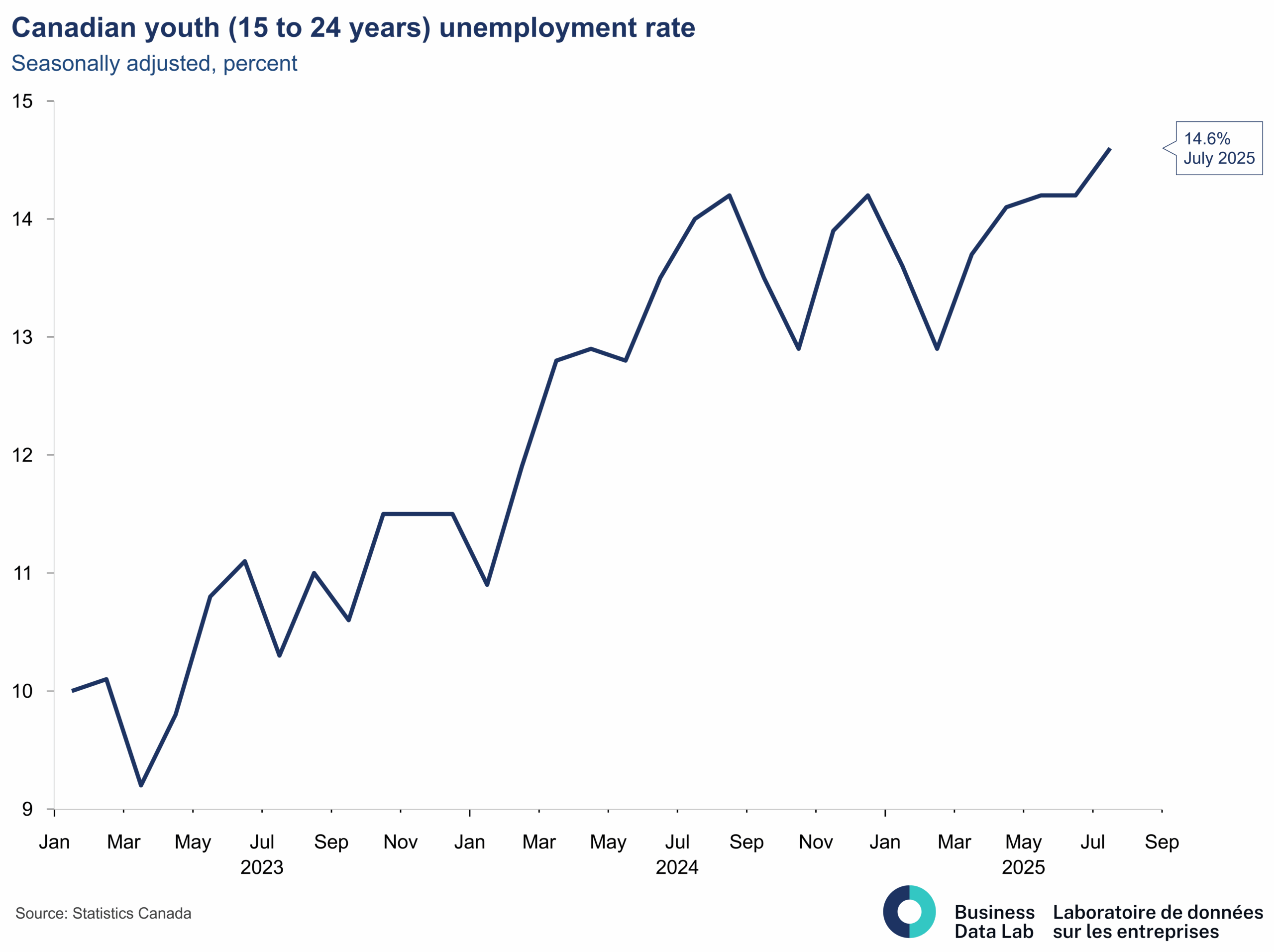Blog /
Labour Force Survey July 2025: Employment declines could be a sign of a weakening economy
July saw significant job losses (-41k, -0.2%), marking the sharpest month-over-month decline since January 2025. Both the employment and participation rates dropped by 0.2 percentage points each. With reduced labour demand this summer, the youth were hit hardest by these losses.



Anupriya Gangopadhyay
“Results from July 2025 LFS release indicates expected decline in GDP and possible interest rate cut in September. Unemployment rate remains unchanged at 6.9% but overall employment fell by 41,000 (-0.2%), partly offsetting the gain in June. The loss in employment was entirely driven by losses in private sector full-time employment. The Bank of Canada could be more inclined to cut rates if CPI continues to tread downwards, though the Bank may continue to hold the rate steady for another term.”
KEY TAKEAWAYS
- July witnessed a drop in employment levels by 41,000 jobs, after a surprise 83,000 surge in June, marking 0.2 percentage point decline from the previous month. Both, employment and participation rate saw a decline by 0.2 percentage points, month-over-month (60.7% and 65.2%, respectively). Unemployment rate, however, remained unchanged at 6.9%.
- Unlike in June, where the gains were majorly in part-time employment, this time the fall in employment is entirely driven by private sector full-time positions. Full-time employment fell by 51,000, denoting a 0.3 percentage point drop from previous month. Additionally, the total number of hours worked also fell by 0.2 percentage point, which could lead to a decline in GDP.
- The loss of employment is entirely concentrated among the youth aged 15 to 24 years (-34,000, -1.2%), highlighting the challenges faced due to tight labour market conditions. Youth employment rate fell to 53.6%, the lowest since November 1998 (excluding the period during COVID-19 pandemic). Employment rate held steady for core-aged (25 to 54 year olds) and young-senior (55 to 64 year olds) workers.
- The information, culture, and recreation industry shredded the most jobs (-29,000), followed by construction (-22,000), business services (-19,000), health (-17,000) and agriculture (-11,000). On the other hand, employment surged in service industries like transportation and education (+26,000 and +22,000, respectively).
- Provincially, employment in Alberta and British Columbia were hit the hardest (-17,000 and -16,000, respectively). Unemployment rate increased by 1 percentage point for Alberta and 0.3 percentage point for British Columbia. However, employment levels increased in Saskatchewan by 4,000. But with more looking for jobs than available, unemployment rate increased by 1 percentage point to 5.5%.
CHARTS



Other Blogs

Sep 19, 2025
Retail Sales July 2025: Cautious consumers slow spending in summer

Sep 17, 2025
We’re here to help: The Bank of Canada pivots to supporting economic growth, following second quarter contraction.

Sep 16, 2025






